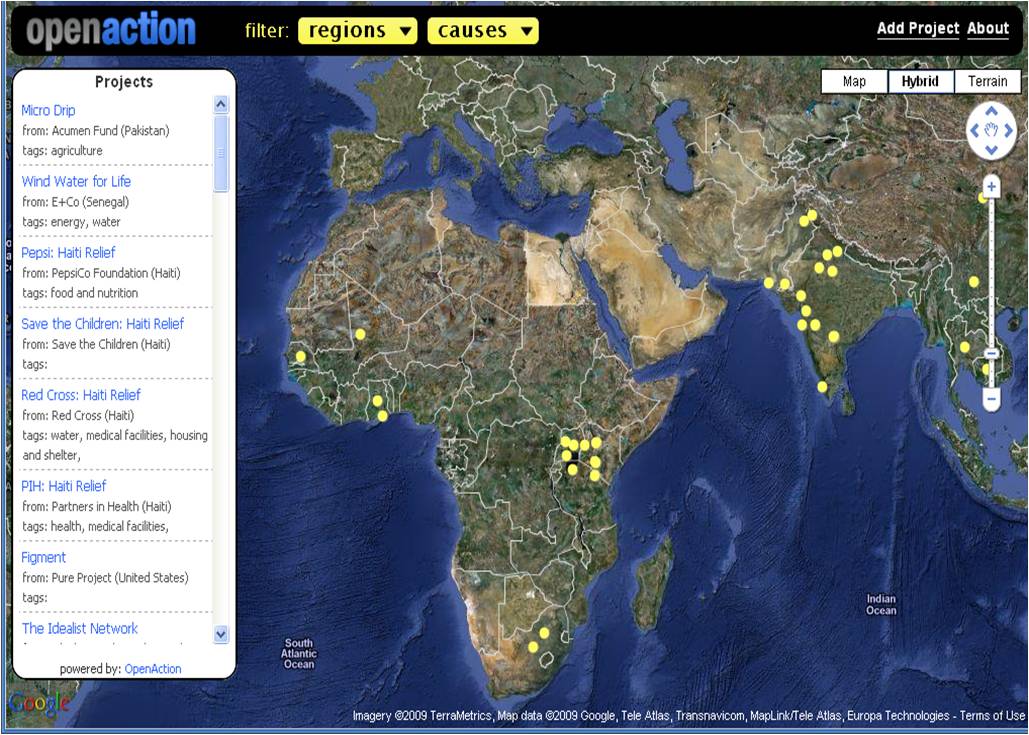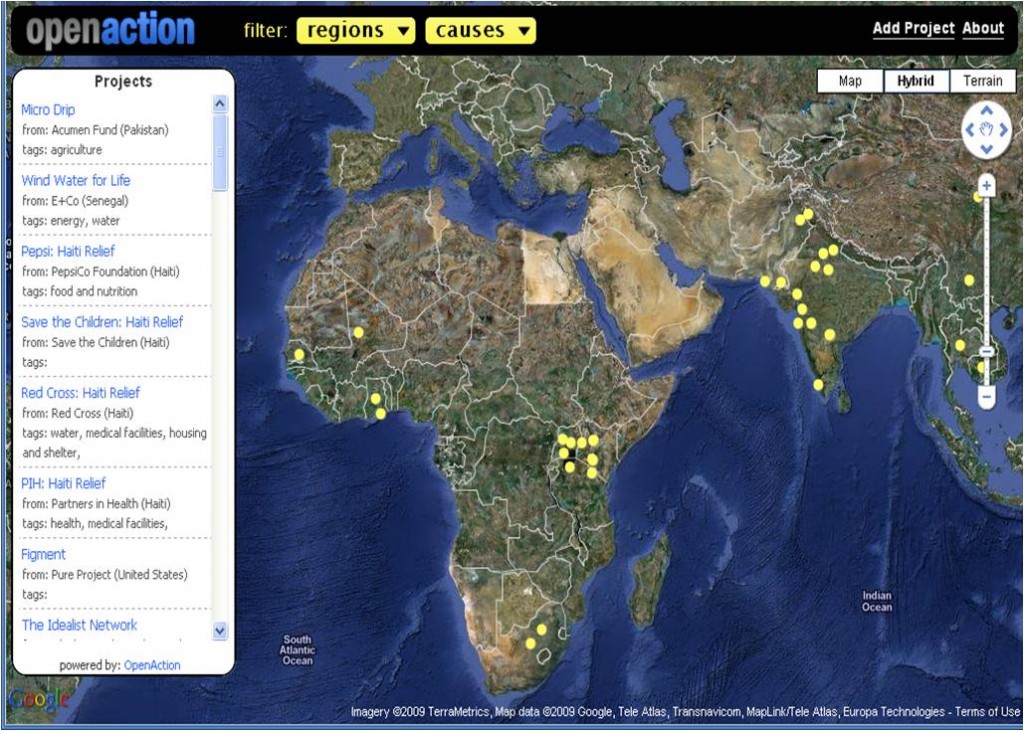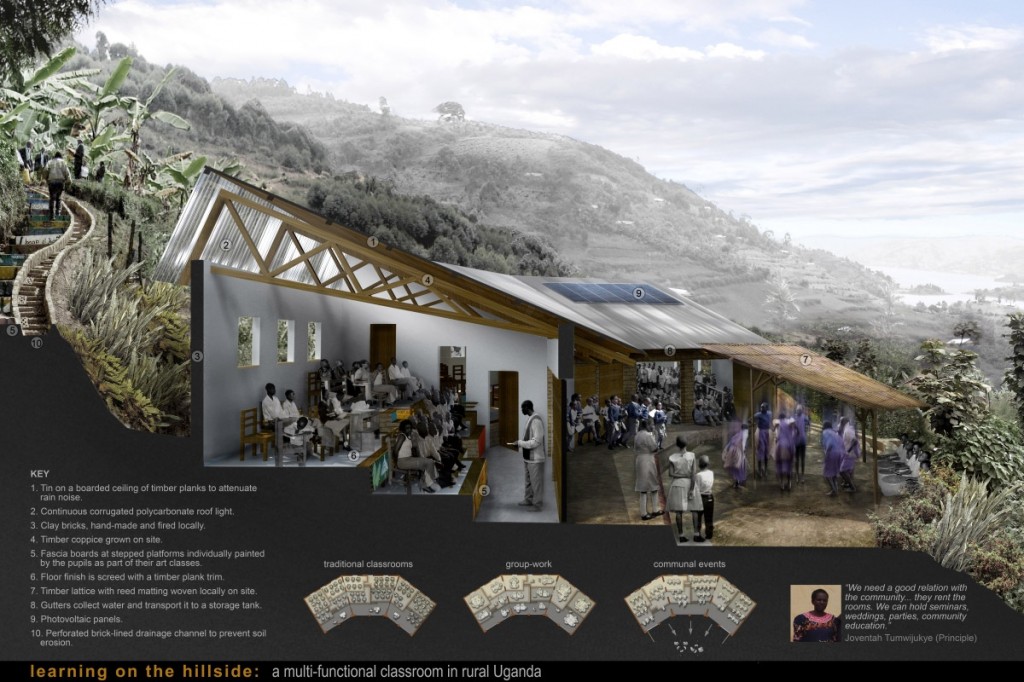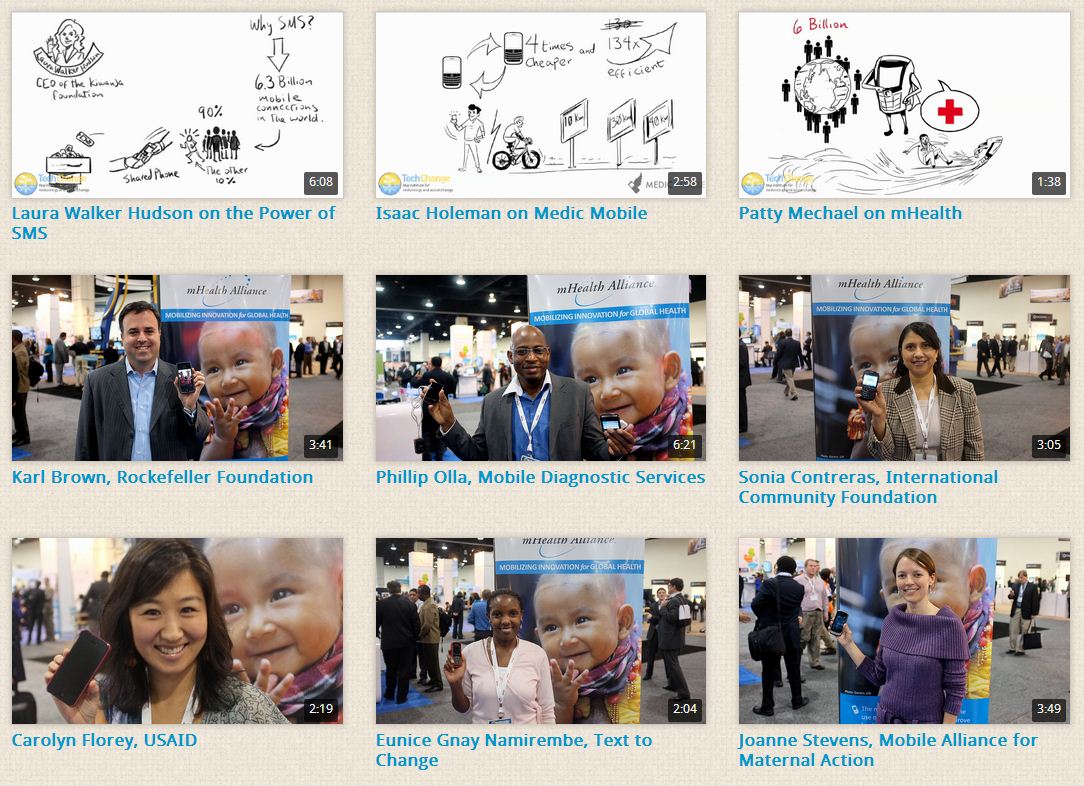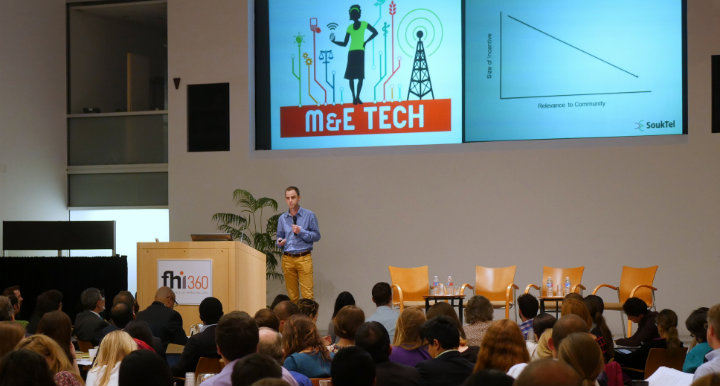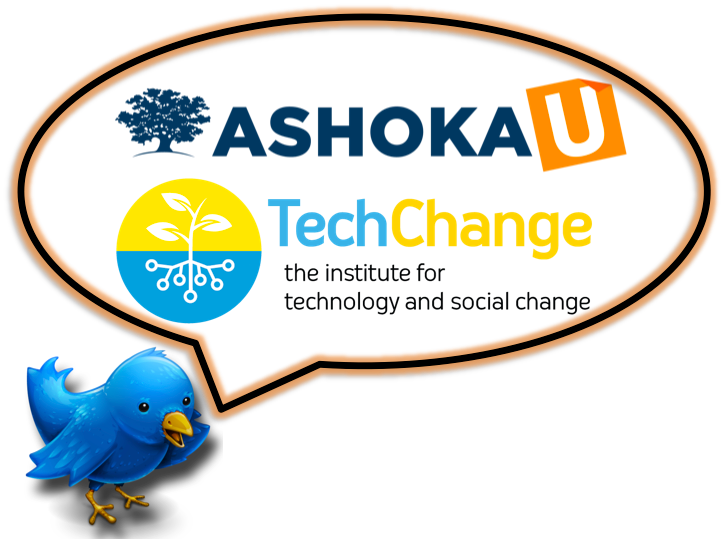 Last Friday, 81 Tweeters joined for one hour to discuss the current landscape and future of technology and social entrepreneurship in higher education. In the Twitter Chat, hosted by TechChange and AshokaU, 410 tweets were sent and 50 URLs were shared that informed of some of the most innovative and relevant advances in the space. You can view all the statistics here at summarizr.
Last Friday, 81 Tweeters joined for one hour to discuss the current landscape and future of technology and social entrepreneurship in higher education. In the Twitter Chat, hosted by TechChange and AshokaU, 410 tweets were sent and 50 URLs were shared that informed of some of the most innovative and relevant advances in the space. You can view all the statistics here at summarizr.
First we asked for specific examples of social entrepreneurial tech ventures. We got some interesting replies and learned about a lot of great work that people are doing. Here’s the list of people, organizations, and businesses that were mentioned.
- Open Action – Web-based Google map collaboration suite used by Universities and organizations. The platform maps out international development initiatives by category. Here’s an example.
- Libraries Across Africa – A model that won the Technology Award Winner at the Dell Social Innovation Competition seeks to create libraries across the continent to increase community development and empowerment through access to information.
- Sakena Yacoobi – Skoll Fellow from Afghan Institute of Learning that addresses effective training and health services to Afghan women.
- School of One– A NYC-based program that designs its teaching based on the best learning method of each student—and it even features online one-on-one tutoring.
- Full Sail University – An interesting model for entrepreneurship and online education that has received better reviews than most online universities. Some still do question its ability to provide affordable and quality education.
- Piazza – A really exciting start-up that provides an easy to use platform for professors and students to generate Q and A discussion.
- Quora – Another chat forum for students and teachers that’s worth looking at.
- Global Resolve Program at Arizona State University – Incredible social entrepreneurship program at Arizona State that “works together with a range of partners to develop sustainable technologies and programs in the areas of energy, clean water, and local economic development.” Don’t forget to sign up for the Ashoka U Exchange in February at ASU, we’re hoping to see you there!
- Cognitive Edge– Uses a software called SenseMaker that analyzes “micro-narratives,” or “snippets of conversation we exchange while waiting in line or talking around campfire” and uses the information for marketing. The GlobalGiving Project uses this information to assess community needs for development work.
- MIT OpenCourseWare and the Khan Academy are two well known venues for open source education.
- Wake Forest University – was the second university to ever offer each student a laptop loaded with Office and Adobe suite.
- Building Tomorrow – Facilitates young people to raise awareness and funds for education projects in sub-Saharan Africa. They also made this fun tool that everyone that went to school in the United States should try out!
- Rocketship Education – Powerful elementary level charter school focusing that uses a hybrid model combining “traditional classroom teaching with individualized instruction using tutors and online technology to meet the specific needs of each and every student.”
- MyBnk – Financial literacy and enterprise capability training for young people.
- Social Entrepreneur Action Learning Project – Connects Babson College graduates working in social entrepreneurship with each other to improve curriculum.
- Inigral and Campus Splash – Use social media and other tools to help retain freshman students.
- Education Generation and Vittana crowdfund student scholarships and loans around the world.
- Knewton – Incredible adaptive learning platform that customizes content for students studying for the GMAT, LSAT, and more.
- Google+ Hangouts – Lots of educational possibilities that are just being explored. Also this streamlined video conferencing capability has interesting potential in the Exchange 2.0 realm. Also as @NoodleEducation pointed out, the Google+ Sparks feature should make research easier and more collaborative. Skype Classroom – Helps students connect with teachers for help and teachers connect with other teachers to collaborate and share best practices.
- Twitter – This New York Times article illustrates how Twitter can actually foster learning in the classroom and help shy students speak up. Also, here’s a list of great ways to use it in the classroom.
The conversation then transitioned to explore the barriers that exist to innovation in higher education (i.e. how to engage students from technical disciplines like computer science and engineering to become more involved in social entrepreneurship). Here are a few of the responses. (Tweets have been rewritten for more readability)
@MicheleGAtDell: Engaging more tech students means providing incentives, they need to see real examples and believe they have resources and tools.
@BldgTomorrow: We’ve launched design contests for schools that we’re building in Uganda. These contests are supported by Architecture for Humanity.
@BANKONRAIN: Having speakers from ‘real world’ come in to talk about what they do, the social impact they are making and the need for change.
@TechChange: We’re really excited about finding responsible ways to bring video game mechanics to the classroom space.
@BizStudioTeam: I think through all levels (elementary, high school, etc) education systems must empower social good as they teach science, technology, engineering, and mathematics.
@AshokaU: Ashoka Fellow Bernard Amadei started Engineers Without Borders and is a great example of social entrepreneurship in technical disciplines.
@BallardCenter: Barriers include students too focused on grades instead of innovation/learning and social entrepreneurship.
@StudentsforSocEnt: We created a social entrepreneurship innovation class for engineering, sociology, and business students to collaborate, create, and implement a product in the developing world.
@AshokaTweets: Big vision helps: Stanford students helped to develop a constitutional crowdsourcing platform for Egpyt.
We want to thank everyone that participated in the chat and we look forward look at each of these tools more at a more in depth level. By the end of the chat many agreed that technology is just a tool and that educators need to focus how to best leverage it. Teacher capacity building should now include training in the use of digital interactive textbooks, video conferencing, social media, Q&A forums, and a host of other tech mediums to help students learn. The challenge is for us is to not become inundated with the abundance of tools that are available and select the ones that are most useful.
At TechChange we’re working to provide dynamic trainings both online as well as in person. You can read about our approach to technology in higher education in an article by Chronicle of Higher Education. We will have three online courses this fall and we’re especially excited about our course in January, New Technologies for Educational Practice (Jan 9 – Feb 3). We also provide on-site international professional trainings in the use of educational technology tools.
Again we recommend signing up for the Ashoka U Exchange 2012 at Arizona State University. This will be a prime occasion to see amazing ways universities and individuals are teaching social entrepreneurship in higher education. We’re especially excited about the hackathon!
Of course we missed many important efforts in the educational technology space in this post, and we welcome your comments and additions to this list!

